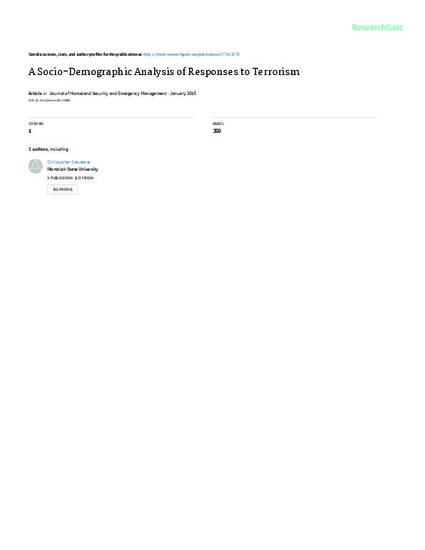
- Design of Experiments and Sample Surveys,
- Law,
- Law and Race,
- Military, War, and Peace,
- Other Public Affairs, Public Policy and Public Administration,
- Peace and Conflict Studies,
- Political Science,
- Public Affairs, Public Policy and Public Administration,
- Race, Ethnicity and Post-Colonial Studies and
- Terrorism Studies
Extensive research has found that there are differences in reported levels of fear of crime and associated protective actions influenced by socio-demographic characteristics such as race and gender. Further studies, the majority of which focused on violent and property crime, have found that specific demographic characteristics influence fear of crime and protective behaviors. However, little research has focused on the influence of socio-demographic characteristics on perceptions, and protective actions in response to the threat of terrorism. Using data from the General Social Survey, this study compared individual-level protective actions and perceptions of the effectiveness of protective responses to the 9/11 terrorist attacks among Americans for demographic factors that have been found to influence fear of crime and protective actions. Results indicated that several socio-demographic factors including race and gender do exhibit some differences in perceptions of the effectiveness of responses to terrorism, although not all achieved statistical significance. Results are discussed in relation to their implications for criminological theory, security, and terrorism preparedness.
Available at: http://works.bepress.com/gabriel-rubin/9/
